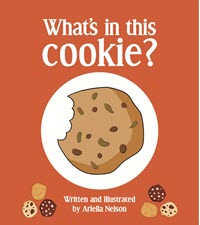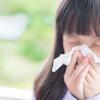

Ariella Nelson will sign her book “What’s in This Cookie?" at Island Books on Mercer Island Oct. 30 at 7 p.m.
I gave Ariella, my granddaughter, the chocolate chip cookie that triggered her first allergic reaction. She was 4 and had just enjoyed a family dinner at my house.
Soon after she arrived back to her house with her sister and parents, she began coughing, then vomiting. Her parents — my daughter and son-in-law — figured she had the flu. But as a journalist who’s written about kids’ health, and as (I admit it) an over-anxious grandmother, I wondered. Can a food allergy show up this way? Were there nuts in that innocent-looking cookie?
There were. And a few months later, the allergist confirmed what I’d suspected: She was allergic to almost all tree nuts. How allergic? Highly.
Now, at age 17, Ariella has stepped up to the nut allergy plate, so to speak, and taken control of her condition, which has touched every area of her life, including trips, sleepovers, lunchtime at school — the list goes on. Two years ago, she entered an oral immunotherapy clinical study at Stanford University. That meant she had to consume actual nuts (starting with nut powder) to prevent reactions from them.
The journey has been a challenging one, including trips to the ER, careful monitoring of activities and meticulous planning around when to consume her daily “dose” of tiny nuts. But now she eats four nuts each day — smothered in chocolate, because she still can’t face an unadorned nut without anxiety — and can relax a little if a tiny pecan or almond accidentally finds its way into a muffin or a scoop of ice cream.
Ariella tells (and illustrates) her story in her new children’s book, “What’s in This Cookie?”, the tale of a young girl who must learn to be careful about everything she eats, but can still “do everything I want to do.” The book, which ends on a note of hope and optimism, is meant to help young children understand what it’s like to have a food allergy.
Why so many allergies?
How do nut allergies happen? No one knows.
Sure, there are theories. One study links nut allergies to breastfeeding. Other studies point to environmental factors. Then there’s the “hygiene hypothesis,” which blames the sizeable increase in food allergies on our fixation with cleanliness (gee, thanks, Purell!), a theory that suggests we’ve somehow interfered with the way our immune systems are supposed to develop.
But it’s the third theory that’s seems to be sticking. When my granddaughter was a baby, the American Academy of Pediatrics (AAP) told parents to delay introducing potential allergens (such as nuts) to a child diet — often until age 3. But several years ago, they reversed those recommendations, acknowledging that parents should introduce allergens as early as 4–6 months as a first line of defense against food allergies.
Yeah, thanks for nothing (nuttin’), AAP.
Things to know
The food allergy train has been quite a ride for my family. Here’s what we’ve learned so far: 1. People who don’t have kids with food allergies don’t get it. 2. They need to get it.
These are some key points, excerpted from the book “Food Allergies: A Recipe for Success at School,” by Jan Hanson:
- A food allergy involves an abnormal response of the immune system and causes the body to produce antibodies to a particular food protein. The most severe form of this reaction is called anaphylaxis.
- If not treated promptly, anaphylaxis may result in death.
- The amount of allergen needed to cause a reaction varies from person to person.
- A food intolerance is not the same as a true food allergy.
- Most reactions happen after eating an unexpected or hidden ingredient or ingesting the allergen from cross-contamination.
- Symptoms of a reaction, such as vomiting, hives or respiratory distress, may vary from person to person.
- Symptoms may progress from mild to severe in several minutes.
Now, let’s talk about you
It’s been hard not to notice that few parents grasp the dangers and implications of food allergies unless there’s a close relative around who has one.
But isn’t that the case with so many things in life?
I’ve seen people treat this potentially life-threatening condition as if it were a neurosis. I’ve read about kids bullying classmates who have food allergies — and grown-ups getting angry about being asked to accommodate these kids in schools. I’ve had friends assure and reassure me that the cupcake or pasta or pancake they made — and that my granddaughter was about to eat — contained no tree nuts, when it actually did. That’s because they didn’t realize that any boxed mix can contain tiny, trace amounts of nuts or nut oil.
What do parents whose kids have food allergies ask of other parents? Understanding would be great — education, even better. Best of all? Empathy. The kind that’s role-model-worthy; that’s just a bit self-sacrificing; that’s lasting and impactful.
“Maybe one day other kids with nut allergies will be able to eat nuts without being afraid,” writes Ariella. “And maybe they won’t ever get sick from eating nuts again. That’s what I hope.”
Editor's note: This article was first published in 2013 and has been updated for 2019.











